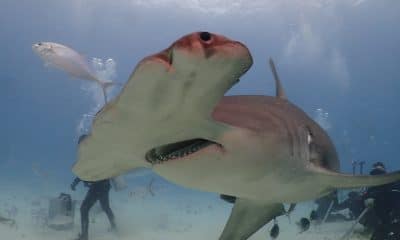Blogs
Where History and Diver Meet: Wreck Diving in Narvik
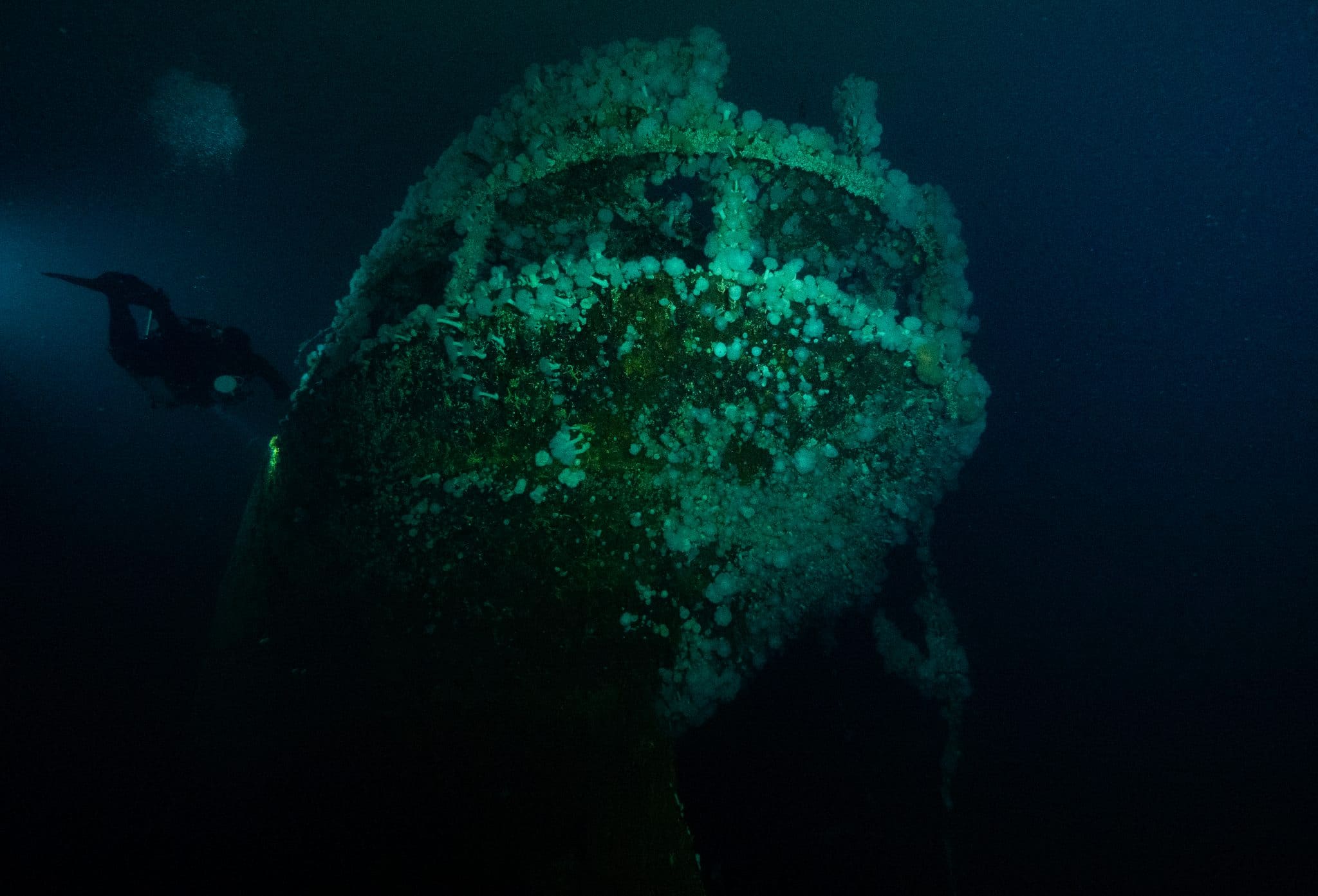
Guest article by Petra Pruden
Cool, clear waters provide exceptional conditions for preserving shipwrecks, and a one-of-a-kind opportunity for divers seeking to explore them. There is one particular location in Norway, near the city and fjord of Ofotfjord, Narvik, that, due to its ideal conditions and historical significance, make it remarkable for diving. Not only are the landscapes spectacular, but during WW2, three significant navy engagements took place there resulting in 16 wrecks accessible to divers today. It’s no surprise that divers such as Australian diver and wreck enthusiast, Edd Stockdale, have been drawn to this location to discover and learn about the wrecks left behind.
Diving with a Story
Located just north of the Arctic Circle in Norway, the coastal city of Narvik offers ice-free access to the North Atlantic. Narvik was a particularly important location in years past as iron ore from Sweden could be shipped there by train, loaded onto ships, and distributed. The city’s strategic foothold caused tension between the British and Norwegian navies and German forces, and they eventually fought to control the transport of iron. From April to June in 1940, three major battles were waged in this fjord resulting in many lives lost and numerous sunken ships. Today, the Narvik fjord is a popular wreck diving site, as the pristine, yet chilly, waters of this protected harbor offer divers and tourists alike an unforgettable, historical experience.
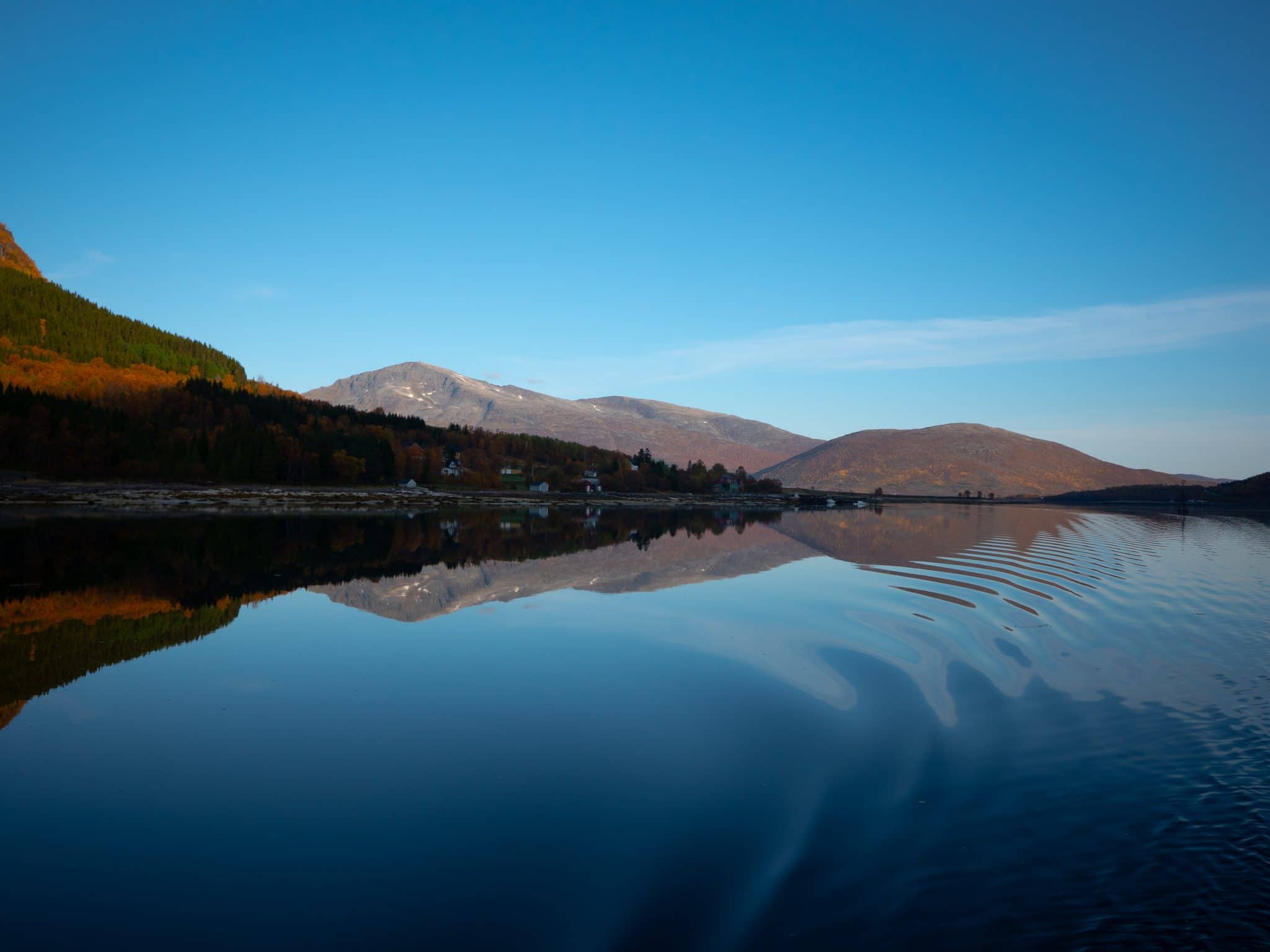
Edd Stockdale and His Trip to Narvik
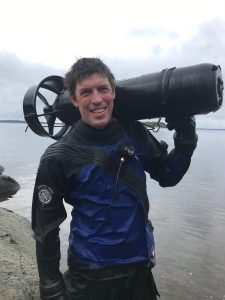
Edd Stockdale
One such diver who found himself drawn to the history and wonder of Narvik is Edd Stockdale. Edd first picked up diving as a boy, and his passion for the sport quickly turned into a lifelong career. Originally from Australia, Edd followed his love for cold dives and made Sweden his new home. With over 5,500 dives in his logbook, 20 years-worth of diving experience, and his name gracing the cover of several prominent training course manuals (RAID instruction manuals), Edd is the kind of guy to take you on a true adventure. Given that his home in Sweden is (relatively) close to Narvik, this last year he made the drive to the famous location to discover some of the wrecks for himself.
Once Edd reached the harbor, he was joined by a group of Swedish and Finnish wreck divers, explorers, and historians aboard an old Swedish minesweeper, the Galten. “Our days generally consisted of getting up at a reasonable time, having breakfast, and getting our rebreathers ready for the day’s diving,” described Edd, then further adding, “We dropped a shot-line at each wreck we visited, then staggered the entry teams to allow time for decompression. Each dive took between 2-3 hours, and after we were finished and the shot-lines recovered, we got to enjoy a relaxing evening on the ship, which, in true Norwegian form, even included a sauna.”
The Erich Giese
With as many as 16 wrecks in the vicinity of Narvik, it’s difficult for divers, Edd included, to choose a favorite dive. “On past dives, I enjoyed visiting the Erich Giese, a German Z class destroyer that sits in about 65 meters of water,” recalled Edd. Back in the late 1930s, the Erich Giese was part of Nazi Germany’s Kriegsmarine, or, in other words, the German navy. During the early stages of the Norwegian Campaign, this ship engaged in naval combat with two British destroyers as it tried to make its way out of Narvik Harbor. Although it was temporarily successful in defending its escape, narrowly dodging five torpedoes fired by the British, it was eventually reduced to a burning wreck after enduring as many as 20 turret shots.
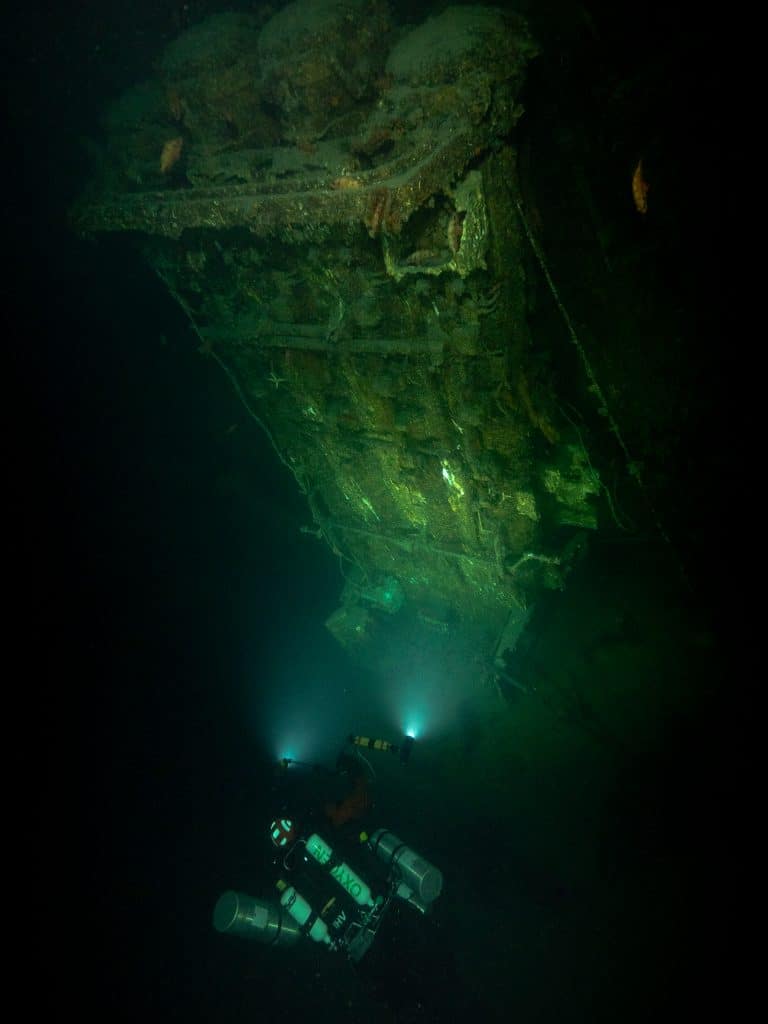
Aft Torpedo launcher Erich Gise
The Landego
Apart from diving the Erich Giese for the first time, Edd was also able to explore the D/S Landego, which he described as “stunning to see up close, with many of its details remaining intact, if not for the Arctic marine life that has taken to living onboard.” The Landego also shares a rather intriguing war story. According to Norwegian reports, the ship was requisitioned by the Germans and used to lay cable for military communication purposes. However, as it turned out, the exact spot chosen by the Germans for laying the cable was an active minefield. The Landego struck a mine, exploded on impact, and cost the lives of 9 men onboard. Today it sits approximately 300 meters offshore and provides divers with an extraordinary diving experience.
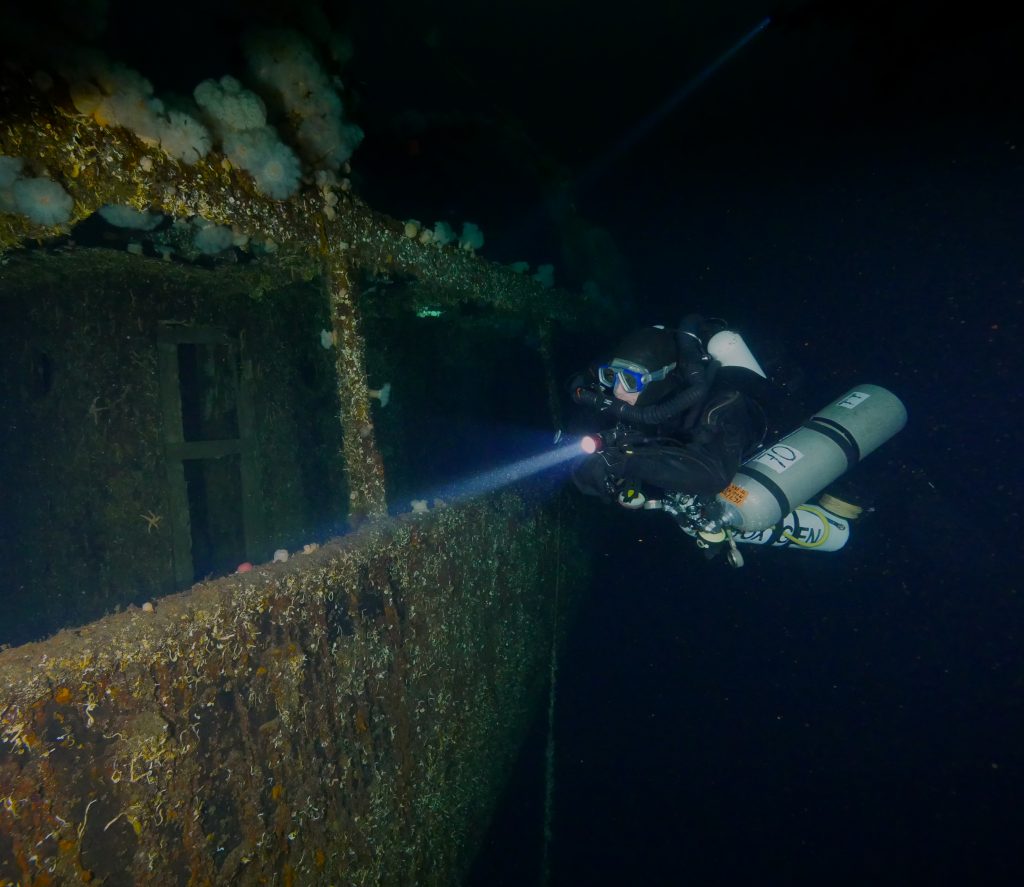
Diver on port side of Landego
If Wrecks Could Speak
It seems the more you look into the history of each wreck in this area, the closer you come to understanding the difficult circumstances many of these men were forced to endure. For Edd, learning the stories of the wrecks he dives has become standard practice. “As with every dive we go on, we are briefed beforehand on the history of the site, which we can then use to compare with the photos and videos we later capture on our dive. This provides our trip with extra meaning, especially in a place like Narvik, where such a large naval conflict was carried out in a relatively small body of water.” It’s interesting, yet also harrowing, to think that a German invasion from 1940 ultimately turned into what is today seen as one of Europe’s top wreck diving destinations.
After learning about the ships’ backstories, Edd and his team are eager to get in the water and start exploring. Edd dons his Liberty sidemount rebreather which allows him to better pass through some of the smaller doorways and access points of the wrecks. Once in the water, Edd and his team take their time searching the sunken ships, combing over details such as torpedoes and bullet holes, and comparing what they found under the water with what they had learned during the briefing. They also take care to document everything they see with their underwater cameras, and even go so far to share videos of their experience on YouTube. This is the perfect way for Edd to relive some of the moments of these dives, while also providing newcomers with some insight on what to expect before getting in the water.
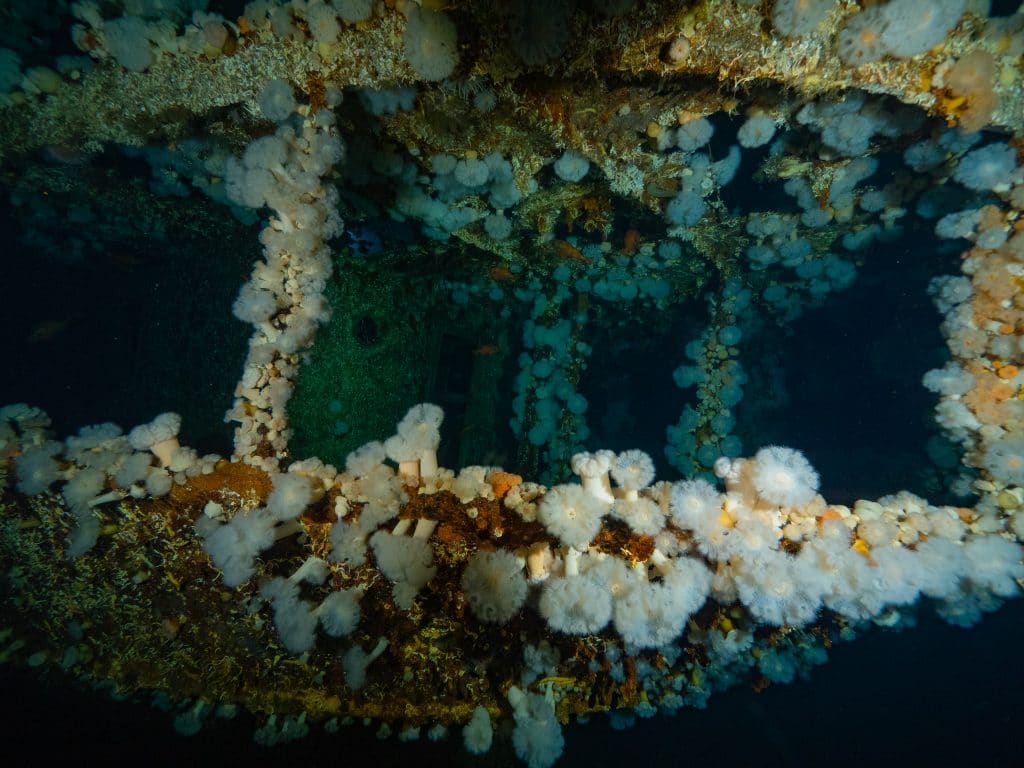
Ladego Stern Deck
Plans for the Future
When asked if he would recommend Narvik to fellow divers, Edd replied with enthusiasm, “Basically, if you like brilliant wreck diving, clear water, stunning scenery, and impressive, historically-relevant dive sites, Narvik is the place for you.” He then went on to add, speaking as a professional diver, that one of Narvik’s greatest advantages is that many of the wrecks sit in 10-30 meters of water, meaning even shallow range divers can discover these remarkable WW2 shipwrecks.
Plus, with so many wrecks located in one fjord, Narvik is the ideal location for divers to make return visits. Edd is already planning his next trip to the area, adding, “Narvik is one of the greatest places to go and teach wreck penetration courses. And, given that wreck photography is a hobby of mine, there’s no better place for me to keep visiting and get all my amazing shots in one place.”
A Destination to Dive
For most divers, just the fact that 16 accessible shipwrecks can be found within such close proximity of one another is reason enough to visit this unique spot. Plus, with the striking landscapes of the Norwegian fjords, the rich history to be discovered, and need we mention the saunas, it’s easy to see why Narvik could command the top slot on divers’ bucket lists. If you’re ready to see for yourself what Edd Stockdale and his team have been so enchanted by, pack your gear and head north to this unforgettable place. Perhaps you could even join Edd there!
Edd Stockdale is an Ambassador for Divesoft. Find out more about the CCR Liberty at www.divesoft.com/en/products/ccr-liberty
Blogs
Northern Red Sea Reefs and Wrecks Trip Report, Part 3: The Mighty Thistlegorm

Jake Davies boards Ghazala Explorer for an unforgettable Red Sea diving experience…
Overnight, the wind picked up, making the planned morning dive a bit bumpy on the Zodiacs to the drop point on Thomas Reef. There, we would dive along the reef before descending through the canyon and then passing under the arch before ascending the wall with a gentle drift. The site provided great encounters with more pelagic species, including shoals of large barracuda, tuna, and bigeye trevally.
Once back on the boat, it was time to get everything tied down again as we would head back south. This time, with the wind behind us, heading to Ras Mohammed to dive Jackfish Alley for another great gentle drift wall dive before then heading up the coast towards the Gulf of Suez to moor up at the wreck of the Thistlegorm. This being the highlight wreck dive of the trip and for many onboard, including myself, it was the first time diving this iconic wreck. I had heard so much about the wreck from friends, and globally, this is a must on any diver’s list. Fortunately for us, there was only one other boat at the site, which was a rarity. A great briefing was delivered by Ahmed, who provided a detailed background about the wreck’s history along with all the required safety information as the currents and visibility at the site can be variable.

Kitting up, there was a lot of excitement on deck before entering the water and heading down the shoreline. Descending to the wreck, there was a light northerly current which reduced the visibility, making it feel more like the conditions that can be found off the Welsh coast. At 10m from the bottom, the outline of the wreck appeared as we reached the area of the wreck which had been bombed, as our mooring line was attached to part of the propeller shaft. Arriving on deck, instantly everywhere you looked there were many of the supplies which the ship was carrying, including Bren Carrier tanks and projectiles that instantly stood out.

We headed around the exterior, taking a look at the large propeller and guns mounted on deck before entering the wreck on the port side to take a look in the holds. It was incredible to see all the trucks, Norton 16H, and BSA motorcycles still perfectly stacked within, providing a real snapshot in time.

Overall, we had four dives on the Thistlegorm, where for all of the dives we were the only group in the water, and at times, there were just three of us on the whole wreck, which made it even more special, especially knowing that most days the wreck has hundreds of divers. Along with the history of the wreck, there was plenty of marine life on the wreck and around, from big green turtles to batfish, along with shoals of mackerel being hunted by trevally. Some unforgettable dives.

The final leg of the trip saw us cross back over the Suez Canal to the Gobal Islands where we planned to stay the night and do three dives at the Dolphin House for the potential of sharing the dive with dolphins. The site, which included a channel that was teeming with reef fish, especially large numbers of goatfish that swam in large shoals along the edge of the reef. These were nice relaxing dives to end the week. Unfortunately, the dolphins didn’t show up, which was okay as like all marine life they are difficult to predict and you can’t guarantee what’s going to be seen. With the last dive complete, we headed back to port for the final night where it was time to clean all the kit and pack before the departure flight the next day.

The whole week from start to finish on Ghazala Explorer was amazing; the boat had all the facilities you need for a comfortable week aboard. The crew were always there to help throughout the day and the chefs providing top quality food which was required after every dive. The itinerary providing some of the best diving with a nice mixture of wreck and reef dives. I would recommend the trip to anyone, whether it’s your first Red Sea liveaboard in the Red Sea or you’re revisiting. Hopefully, it’s not too long before I head back to explore more of the Red Sea onboard Ghazala Explorer.

To find out more about the Northern Red Sea reef and wrecks itineraries aboard Ghazala Explorer, or to book, contact Scuba Travel now:
Email: dive@scubatravel.com
Tel: +44 (0)1483 411590
Photos: Jake Davies / Avalon.Red
Blogs
Northern Red Sea Reefs and Wrecks Trip Report, Part 2: Wall to Wall Wrecks

Jake Davies boards Ghazala Explorer for an unforgettable Red Sea diving experience…
The second day’s diving was a day full of wreck diving at Abu Nuhas, which included the Chrisoula K, Carnatic, and Ghiannis D. The first dive of the day was onto the Chrisoula K, also known as the wreck of tiles. The 98m vessel remains largely intact where she was loaded with tiles which can be seen throughout the hold. The stern sits at 26m and the bow just below the surface. One of the highlights of the wreck is heading inside and seeing the workroom where the machinery used for cutting the tiles are perfectly intact. The bow provided some relaxing scenery as the bright sunlight highlighted the colours of the soft coral reef and the many reef fish.

Following breakfast, we then headed to the next wreck, which was the Carnatic. The Carnatic is an 89.9m sail steamer vessel that was built in Britain back in 1862. She ran aground on the reef back in 1869 and remains at 27m. At the time, she was carrying a range of items, including 40,000 sterling in gold. An impressive wreck where much of the superstructure remains, and the two large masts lay on the seafloor. The wooden ribs of the hull provide structures for lots of soft corals, and into the stern section, the light beams through, bouncing off the large shoals of glass fish that can be found using the structure as shelter from the larger predators that are found outside of the wreck.

The final wreck at Abu Nuhas was the Ghiannis D, originally called ‘Shoyo Maru,’ which was 99.5m long and built in Japan back in 1969 before becoming a Greek-registered cargo ship in 1980. The ship then ran aground on the reef on April 19th, 1983, and now sits at the bottom at a depth of 27m. Heading down the line, the stern of the ship remains in good condition compared to the rest of the hull. The highlight of the wreck, though, is heading into the stern section and down the flights of stairs to enter the engine room, which remains in good condition and is definitely worth exploring. After exploring the interior section of the ship, we then headed over to see the rest of the superstructure, where it’s particularly interesting to see the large table corals that have grown at the bow relatively quickly considering the date the ship sank. After surfacing and enjoying some afternoon snacks, we made sure everything was strapped down and secured as we would be heading north and crossing the Gulf of Suez, where the winds were still creating plenty of chop.

The next morning, it was a short hop to Ras Mohammed Nature Reserve for the next couple of days of diving. The 6am wake-up call came along with the briefing for the first site we would be diving, which was Shark & Yolanda. The low current conditions allowed us to start the dive at Anemone City, where we would drift along the steep, coral-filled wall. These dives involved drifts, as mooring in Ras Mohammed wasn’t allowed to protect the reefs. As a dive site, Shark & Yolanda is well-known and historically had a lot of sharks, but unfortunately not so many in recent years, especially not so early in the season. However, there was always a chance when looking out into the blue.

The gentle drift took us along the steep walls of the site, with plenty of anemone fish to be seen and a huge variety of corals. It wasn’t long into the dive before we were accompanied by a hawksbill turtle, who drifted with us between the two atolls before parting ways. Between the two reefs, the shallow patch with parts of coral heads surrounded by sand provided the chance to see a few blue-spotted stingrays that were mainly resting underneath the corals and are always a pleasure to see. With this being the morning dive, the early sunlight lit up the walls, providing tranquil moments. Looking out into the blue, there was very little to be seen, but a small shoal of batfish shimmering underneath the sunlight was a moment to capture as we watched them swim by as they watched us.

Towards the end of the dive, we stopped at the wreck of the Jolanda where the seafloor was scattered with toilets from the containers it was carrying. This provided a unique site to make a safety stop, which was also accompanied by a large barracuda slowly swimming by, along with a hawksbill turtle calmly swimming over the reef as the sun rays danced in the distance.
For the next dive, we headed north to the Strait of Tiran to explore the reefs situated between Tiran Island and Sharm El Sheik, which were named after the British divers who had found them. We started on Jackson before heading to Gordons Reef, where we also did the night dive. All the atolls at these sites provided stunning, bustling coral reefs close to the surface and steep walls to swim along, which always provided the opportunity to keep an eye out for some of the larger species that can be seen in the blue. Midwater around Jackson Reef was filled with red-toothed triggerfish and shoals of banner fish, which at times were so dense that you couldn’t see into the blue. Moments went by peacefully as we enjoyed the slow drift above the reef, watching these shoals swim around under the mid-afternoon sun.

The night dive at Gordon’s Reef was mainly among the stacks of corals surrounded by sand, which was great to explore under the darkness. After some time circling the corals, we came across what we were really hoping to find, and that was an octopus hunting on the reef. We spent the majority of the dive just watching it crawl among the reef, blending into its changing surroundings through changes in colour and skin texture. It’s always so fascinating and captivating to watch these incredibly intelligent animals, in awe of their ability to carry out these physical changes to perfectly blend into the reef. Before we knew it, it was time to head back to the boat to enjoy a well-deserved tasty dinner prepared by the talented chefs onboard.
Check in for the 3rd and final part of this series from Jake tomorrow!
To find out more about the Northern Red Sea reef and wrecks itineraries aboard Ghazala Explorer, or to book, contact Scuba Travel now:
Email: dive@scubatravel.com
Tel: +44 (0)1483 411590
Photos: Jake Davies / Avalon.Red
-

 News3 months ago
News3 months agoHone your underwater photography skills with Alphamarine Photography at Red Sea Diving Safari in March
-

 News3 months ago
News3 months agoCapturing Critters in Lembeh Underwater Photography Workshop 2024: Event Roundup
-

 Marine Life & Conservation Blogs3 months ago
Marine Life & Conservation Blogs3 months agoCreature Feature: Swell Sharks
-

 Blogs2 months ago
Blogs2 months agoMurex Resorts: Passport to Paradise!
-

 Blogs2 months ago
Blogs2 months agoDiver Discovering Whale Skeletons Beneath Ice Judged World’s Best Underwater Photograph
-

 Marine Life & Conservation2 months ago
Marine Life & Conservation2 months agoSave the Manatee Club launches brand new webcams at Silver Springs State Park, Florida
-

 Gear Reviews3 months ago
Gear Reviews3 months agoGear Review: Oceanic+ Dive Housing for iPhone
-

 Gear Reviews2 weeks ago
Gear Reviews2 weeks agoGEAR REVIEW – Revolutionising Diving Comfort: The Sharkskin T2 Chillproof Suit











